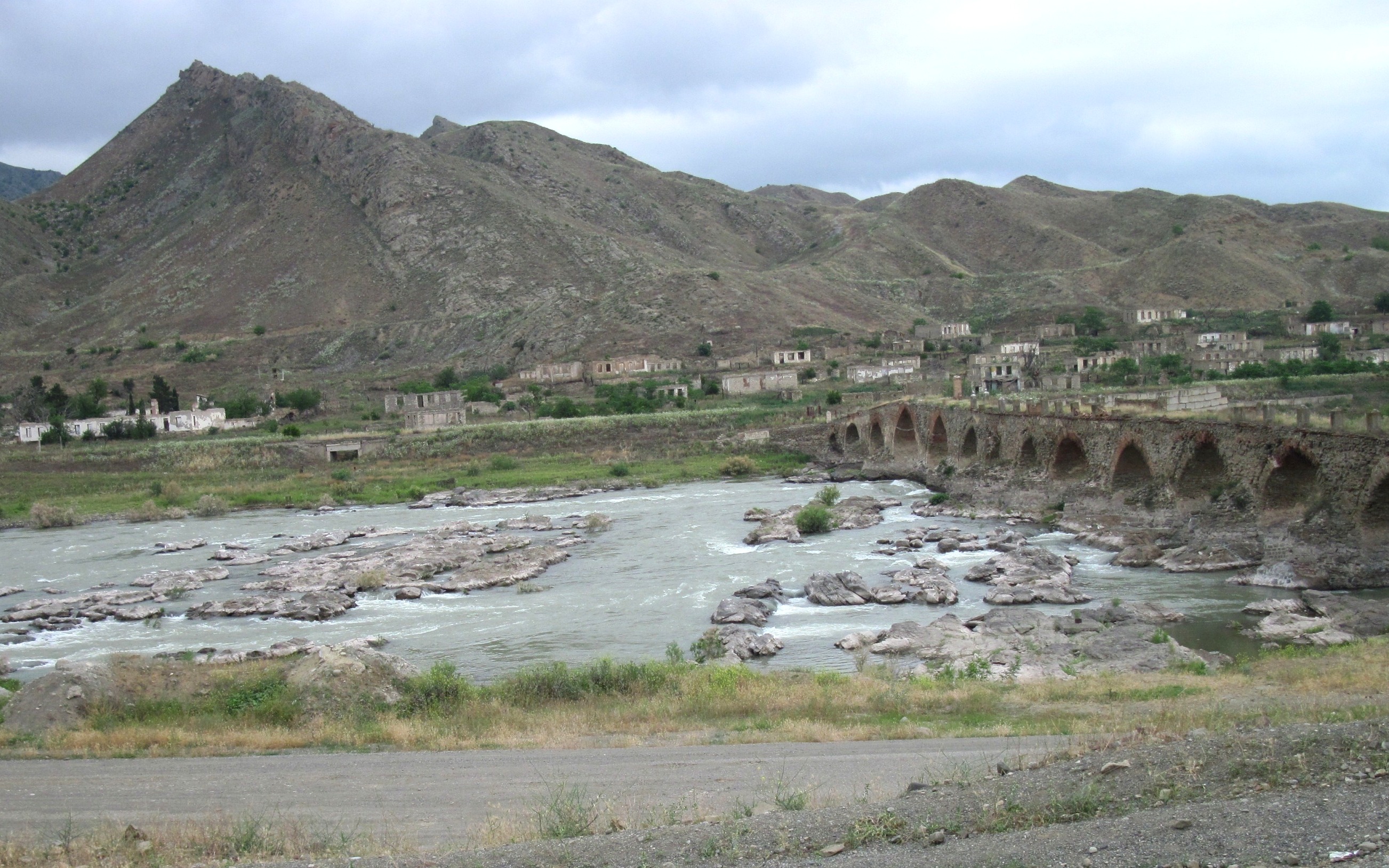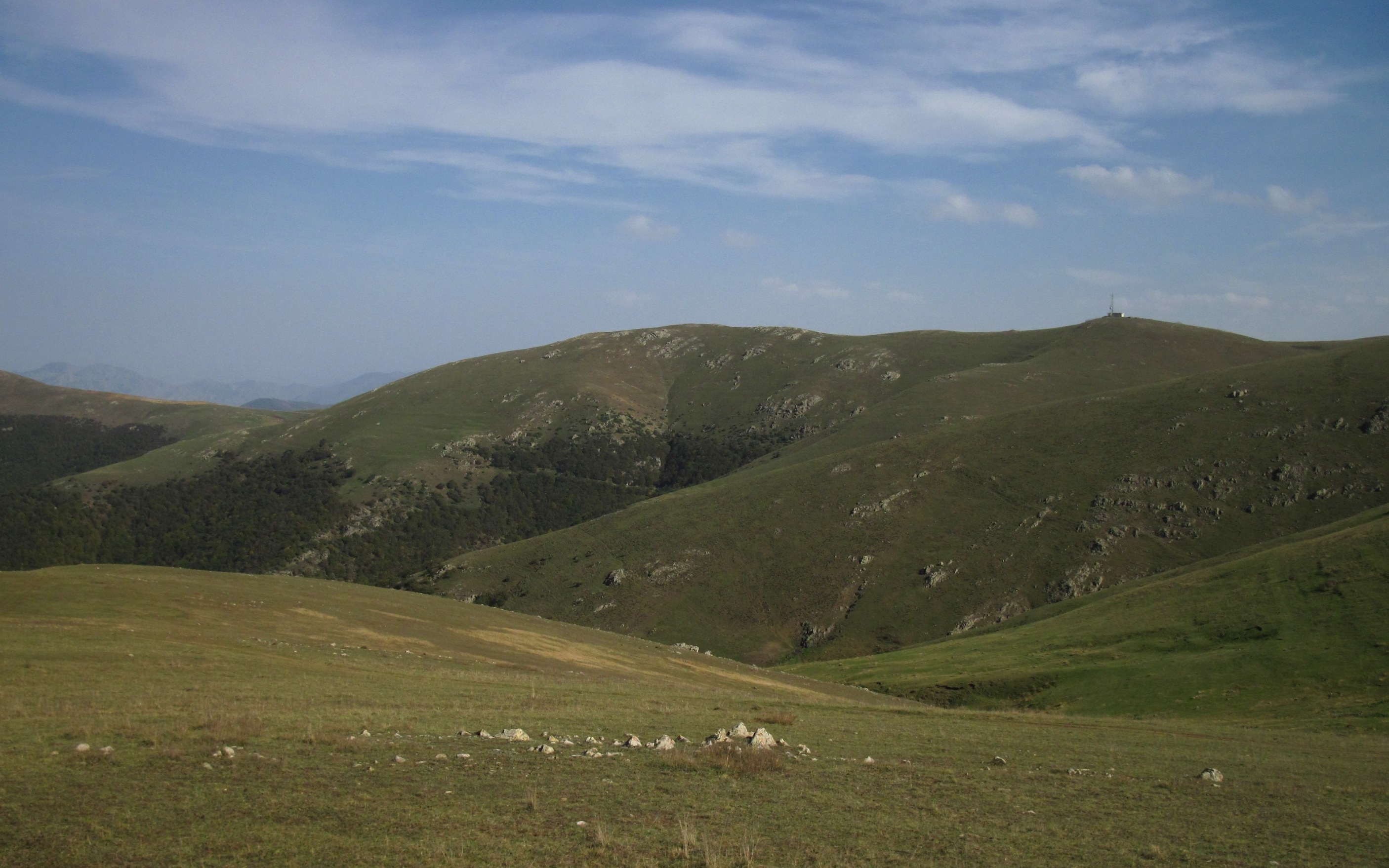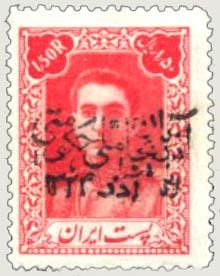|
Mohammad Khanlu
Mohammad Khanlu (Moḥammad-Ḵānlū) ( محمد خانلو) is one of the six major Tribes of Arasbaran. It is a Turkicized Kurdish tribe dwelling for the most part in the Arasbaran region, in East Azerbaijan Province of Iran. Its summer quarters were around Marzrud and its winter quarters were around Heydarkanlu village of Khoda Afarin County. According to A. Lampton, in Arasbaran the pasturage belonged to Khans, who also owned arable land in winter quarters. At present the tribe is in most part sedentary, with majority of families living in suburbs of Tehran. Some descendants of the ruling Klan spend their summer in Chaparli pastures, and others in the recently erected villas in Garmanab. A brief history The Mohammad Khanlus claim that their tribe were founded by Muhammad Khan in the Qajar period. After Muhammad Khan, the tribe has been successively ruled by Javad Khan, Samad Khan, Asadollah Khan, Abdollah Khan, and Asadollah Khan II. The last Khan, who was an MP at the w ... [...More Info...] [...Related Items...] OR: [Wikipedia] [Google] [Baidu] |
Chaparli July 2011
Chaparli ( چپرلی) is a grassland on a mountain range between Abbasabad and Oskolou villages. The area is the summer quarter of the Derilou branch of Mohammad Khanlu tribe, which in the wake of White Revolution included 40 households. The number significantly dropped over years and in late 1990s no family migrated to the summer quarter of Chaparli for the lack of experienced shepherds. The trend has somehow reversed in recent years, and about 20 families pitch their tents in the area, albeit mainly for escaping the unpleasantly hot climate of Derilou village. Chaparli is a prime location for observing, even experiencing, the idyllic life of Arasbaran nomadic tribes. Moreover, the topography provides an excellent sightseeing opportunity. In addition to green mountain ranges, many scenic villages of Kaleybar County and Khoda Afarin County are in full view. In Chaparli Arasbaran dogs receive due respect Orhan Pamuk in 2001 Turkish novel, My Name Is Red ''My Name Is Red' ... [...More Info...] [...Related Items...] OR: [Wikipedia] [Google] [Baidu] |
Islamic Revolution
The Iranian Revolution ( fa, انقلاب ایران, Enqelâb-e Irân, ), also known as the Islamic Revolution ( fa, انقلاب اسلامی, Enqelâb-e Eslâmī), was a series of events that culminated in the overthrow of the Pahlavi dynasty under Shah Mohammad Reza Pahlavi, and the replacement of his government with an Islamic republic under the rule of Ayatollah Ruhollah Khomeini, a leader of one of the factions in the revolt. The revolution was supported by various leftist and Islamist organizations. After the 1953 Iranian coup d'état, Pahlavi had aligned with the United States and the Western Bloc to rule more firmly as an authoritarian monarch. He relied heavily on support from the United States to hold on to power which he held for a further 26 years. This led to the 1963 White Revolution and the arrest and exile of Ayatollah Khomeini in 1964. Amidst massive tensions between Khomeini and the Shah, demonstrations began in October 1977, developing into a campaign ... [...More Info...] [...Related Items...] OR: [Wikipedia] [Google] [Baidu] |
Derilou
Dari Lu () (also known as Dirili) is a village in Minjavan-e Sharqi Rural District, Minjavan District, Khoda Afarin County, East Azerbaijan Province, Iran. At the 2006 census, its population was 429, in 84 families. According to a more recent reliable statistics the population is 399 people in 102 families, which indicates a significant increase in the number of households while population is declining. In the wake of White Revolution (early 1960s) a clan of Mohammad Khanlu tribe, comprising 40 households, used Derilou as their winter quarters.P. Oberling, “The Tribes of Qarāca Dāġ,” Oriens 17, 1964, p. 69 At present, most inhabitants are farmers. Still, during hot days of late spring and summer they move to tents in Chaparli summer camp to provide relatively large sheep herds of the village with better grazing opportunity. Before the 1940s the village enjoyed relative fame as the seat of Hossein Khan Leysi, who was a feudal from the ruling family of the Mohammad Khanl ... [...More Info...] [...Related Items...] OR: [Wikipedia] [Google] [Baidu] |
Janan Lu
, settlement_type = Village , image_skyline = Janan Lu village in October.jpg , imagesize = , image_caption = The village of Janan Lu in October 2011 , pushpin_map = Iran , mapsize = , subdivision_type = Country , subdivision_name = , subdivision_type1 = Province , subdivision_name1 = East Azerbaijan , subdivision_type2 = County , subdivision_name2 = Khoda Afarin , subdivision_type3 = District , subdivision_name3 = Minjavan , subdivision_type4 = Rural District , subdivision_name4 = Minjavan-e Sharqi , leader_title = , leader_name = , established_title = , established_date = , area_total_km2 = , area_footnotes = , population_as_of = 2016 , population_footnotes = , population_total = 1742 , population_density_km2 = auto , timezone = IRST , utc_offset = +3:30 , coordinat ... [...More Info...] [...Related Items...] OR: [Wikipedia] [Google] [Baidu] |
Khomarlu
Khomarlu ( fa, خمارلو; also Romanized as Khomārlū) is a city & capital of Khoda Afarin County, East Azerbaijan Province, Iran. At the 2006 census, its population was 1,222, in 334 families. Situation The first reference to Khomarlu in the published literature, is the following description by Robert Mignan, "..the village of Khomorloo, situated upon a deep ravine, between steep calcareous and barren mountains. The dwellings of the villagers were scooped from the sides of a mountain, which formed three sides of each hut, the fourth being a wall of mud, in which an aperture of four feet square was left, and a few miserable planks tied together served for the door: the whole covered over by rafters, and a thin coating of flat thatch. They had the character of being plunderers and assassins, but excused their depredations by pretending that the whole country were at war with them. Had we not been with the prince, we dared not have trusted to their hospitality. They appeared ... [...More Info...] [...Related Items...] OR: [Wikipedia] [Google] [Baidu] |
Zarnaq
Zarnaq ( fa, زرنق; also known as Zaraq, Zarnā, and Zerna) is a city in the Central District of Heris County, East Azerbaijan Province, Iran. At the 2006 census, its population was 4,766, in 1,132 families. Its inhabitants are from Oghuz Turks The Oghuz or Ghuzz Turks (Middle Turkic languages, Middle Turkic: ٱغُز, ''Oγuz'', ota, اوغوز, Oġuz) were a western Turkic people that spoke the Oghuz languages, Oghuz branch of the Turkic languages, Turkic language family. In th ... and speak Azerbaijani Turkic. References Populated places in Heris County Cities in East Azerbaijan Province {{Heris-geo-stub ... [...More Info...] [...Related Items...] OR: [Wikipedia] [Google] [Baidu] |
Tu Ali-ye Olya
Tu Ali-ye Olya ( fa, طوعلی عليا, also Romanized as Tū ‘Alī-ye ‘Olyā, Toloo Ali Olya, and Tow 'Ali-ye 'Olyā; also known as , Yokhsha Tūālī, and Yukhari Tuali) is a village in Minjavan-e Sharqi Rural District, Minjavan District, Khoda Afarin County, East Azerbaijan Province, Iran. At the 2006 census, its population was 265, in 66 families. In the wake of White Revolution (early 1960s) a clan of Mohammad Khanlu tribe, comprising 35 households, used Tu Ali-ye Olya as their winter quarters.P. Oberling, “The Tribes of Qarāca Dāġ,” Oriens 17, 1964, p. 69 These semi-settled nomads spent summer months in pastures located between Chaparli Chaparli ( چپرلی) is a grassland on a mountain range between Abbasabad and Oskolou villages. The area is the summer quarter of the Derilou branch of Mohammad Khanlu tribe, which in the wake of White Revolution included 40 households. T ... and Aqdash. Their pastors' proximity to meadows in Abbasabad territory ... [...More Info...] [...Related Items...] OR: [Wikipedia] [Google] [Baidu] |
Tu Ali-ye Sofla
Tu Ali-ye Sofla ( fa, طوعلي سفلي, also Romanized as Tū ‘Alī-ye Soflá, Toloo Ali Soflā, and Ţow 'Ali-ye Soflá; also known as Ţow ‘Alī Pā’īn, Tuali, Tuālī Ashaghī, and Tūlī ‘Ashāqī) is a village in Minjavan-e Sharqi Rural District, Minjavan District, Khoda Afarin County, East Azerbaijan Province, Iran. At the 2006 census, its population was 354, in 76 families. In the wake of White Revolution (early 1960s) a clan of Mohammad Khanlu Mohammad Khanlu (Moḥammad-Ḵānlū) ( محمد خانلو) is one of the six major Tribes of Arasbaran. It is a Turkicized Kurdish tribe dwelling for the most part in the Arasbaran region, in East Azerbaijan Province of Iran. Its summer quarte ... tribe, comprising 50 households, used Tu Ali-ye Sofla as their winter quarters.P. Oberling, “The Tribes of Qarāca Dāġ,” Oriens 17, 1964, p. 69 References Populated places in Khoda Afarin County Kurdish settlements in East Azerbaijan Province {{KhodaAf ... [...More Info...] [...Related Items...] OR: [Wikipedia] [Google] [Baidu] |
Safarlu
Safarlu ( fa, صفرلو, also Romanized as Şafarlū) is a village in Keyvan Rural District, in the Central District of Khoda Afarin County, East Azerbaijan Province, Iran. At the 2006 census, its population was 298, in 72 families. In the wake of White Revolution (early 1960s) a clan of Mohammad Khanlu Mohammad Khanlu (Moḥammad-Ḵānlū) ( محمد خانلو) is one of the six major Tribes of Arasbaran. It is a Turkicized Kurdish tribe dwelling for the most part in the Arasbaran region, in East Azerbaijan Province of Iran. Its summer quarte ... tribe, comprising 55 households, used Safarlu as their winter quarters.P. Oberling, “The Tribes of Qarāca Dāġ,” Oriens 17, 1964, p. 69 References Populated places in Khoda Afarin County Kurdish settlements in East Azerbaijan Province {{KhodaAfarin-geo-stub ... [...More Info...] [...Related Items...] OR: [Wikipedia] [Google] [Baidu] |
White Revolution
The White Revolution ( fa, انقلاب سفید ''Enqelāb-e Sefid'') or the Shah and People Revolution ( fa, انقلاب شاه و مردم ''Enqelāb-e Shāh o Mardom'') was a far-reaching series of reforms resulting in aggressive modernization in Iran launched on 26 January 1963 by the Shah, Mohammad Reza Pahlavi, which lasted until 1979. The reforms resulted in a great redistribution of wealth to Iran's working class, explosive economic growth in subsequent decades, rapid urbanization, and deconstruction of Iran's feudalist customs. The reforms were characterized by high economic growth rates, major investments in infrastructure, substantial growth in per capita wealth and literacy of Iranians. The economic growth and education advancement arguably paved the way for the Shah's military arms build-up and the establishment of Iran as a major geopolitical power in the Middle East. It consisted of several elements, including land reform, sale of some state-owned factories to ... [...More Info...] [...Related Items...] OR: [Wikipedia] [Google] [Baidu] |
Azerbaijan People's Government
The Azerbaijan People's Government ( az, آذربایجان میللی حکومتی - Azərbaycan Milli Hökuməti; fa, حکومت خودمختار آذربایجان) was a short-lived unrecognized secessionist state in northern Iran from November 1945 to December 1946. Like the unrecognized Republic of Mahabad, it was a puppet state of the Soviet Union. Established in Iranian Azerbaijan, the Azerbaijan People's Government capital was the city of Tabriz. Its establishment and demise were a part of the Iran crisis, which was a precursor to the Cold War. History To supply the Soviet forces with war material through Iran, British and Soviet troops jointly occupied the country in August 1941. Soviet forces entering Iranian territory from the Armenian SSR and the Azerbaijan SSR and British and Indian forces entering from Iraq soon took the control of the country. On 16 September, the British forced Reza Shah to abdicate in favor of his son Mohammad Reza Shah Pahlavi, who ruled ... [...More Info...] [...Related Items...] OR: [Wikipedia] [Google] [Baidu] |
Haji-Alilu
Haji-Alilu (ḤĀJI ʿALILU) ( حاج علیلو) is one on the six major Tribes of Arasbaran. It is a Turkic tribe with two branches; one dwelling in the vicinity of Maragheh, and main branch lives north of Varzaqan and Ahar in the Qarājadāḡ region of East Azerbaijan Province of Iran. In the wake of Russo-Persian War (1804–13) Haji-Alilu comprised 800 tents.R. Khanam, Encycl. Ethnography Of Middle-East And Central Asia, 2005, p. 313 During Persian Constitutional Revolution, the tribe's head, Amir Arshad, supported the revolutionary forces against the Chalabianlu tribe and their allies, who, under the leadership of Rahimkhan Chalabianloo, had been the major supporters of the deposed Mohammad Ali Shah Qajar Mohammad Ali Shah Qajar ( fa, محمدعلی شاه قاجار; 21 June 1872 – 5 April 1925, San Remo, Italy), Shah of Iran from 8 January 1907 to 16 July 1909. He was the sixth shah of the Qajar dynasty. Biography Mohammad Ali Shah Qajar .... References {{refli ... [...More Info...] [...Related Items...] OR: [Wikipedia] [Google] [Baidu] |







